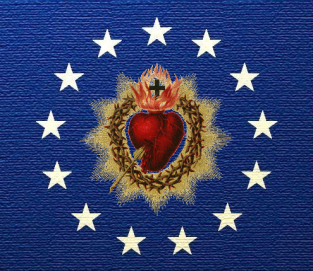I. The Agony in the Garden
It occurs to me that, through the sorrowful mysteries, Christ is giving us an example of suffering. The Agony in the Garden was not only for the purpose of giving us an example, but certainly achieves that among other things. The Agony in the Garden, to me, is an example for us of suffering in silence and solitude. Oftentimes when we feel we are suffering–especially when we are suffering in a uniquely individual way–we are tempted to try and make it public suffering, even as Christ turned to Peter, James, and John and asked them to stay awake with him. But they could not–his suffering was perhaps not relatable to them. It was too personal–they could appreciate in the abstract but not with a vividness that kept them from falling asleep. When we are suffering silently, and alone, Christ shows us that the best thing to do is to bear our suffering worthily, and to offer it to God.
II. The Scourging at the Pillar
The scourging at the Pillar is an example of Public suffering. Christ bore the scourging even though it was unjust, even though it was public, even though it was brought on by the false accusations of his own countrymen. I think of the Scourging at the Pillar sometimes when I am enduring rebukes received justly or unjustly. Notice, though, how the Agony in the Garden and the Scourging at the Pillar are two different kinds of suffering. The Agony was a kind of spiritual suffering, Christ was enduring something mysterious and beyond human comprehension that made Him sweat blood. The Scourging was a physical suffering imposed from without, which we can see and which leaves physical wounds on His holy body. Enduring the scourging worthily–commending it to God, and keeping His silence–is what we should remember when we are suffering likewise.
III. The Crowning with Thorns
The Crowning with Thorns is an example of ridicule and humiliation. Christ was crowned, you recall, by the Roman soldiers, and they swatted the crown with reeds to further inflict wounds on him and laugh at him. In the same series of events, they hailed him as “King of the Jews” and mocked him to his face–I believe this is when they created the sign which you see on some depictions of the crucifix, abbreviated “INRI” which translated to English reads “Jesus the Nazarene, King of the Jews”. This sorrowful mystery is an example of suffering whose wounds are inflicted by others, but which wound us mentally–perhaps one could draw symbolism from the fact that the Thorns were placed on Christ’s head and He was only wounded there. Ridicule, Mockery, humiliation–these are things which we only fear when we are attached to the world.
IV. The Carrying of the Cross
We must pick up our cross and follow Him–it means enduring our suffering over time, for long periods of time, through our life until we arrive at the final point of our suffering. The Carrying of the Cross reminds us that Christ did not merely endure momentary suffering but he endured it for a long walk, during which he fell three times. We may be fortunate enough to endure our suffering with a friend, like Simon of Cyrene who helped carry Christ’s cross. But ultimately the Cross is built for one, and we must endure it however long it lasts.
V. The Crucifixion of our Lord, Jesus Christ
Christ bore His sufferings unto death, the same fate that awaits us all, though our crosses take different forms. No two people suffer the same crosses, but Christ shows us that we can sanctify our suffering by enduring them worthily, and that if we do endeavor to endure them worthily, the glory of the Resurrection awaits us.
AMDG

3 thoughts on “CCCIII – Reflections on the Sorrowful Mysteries”